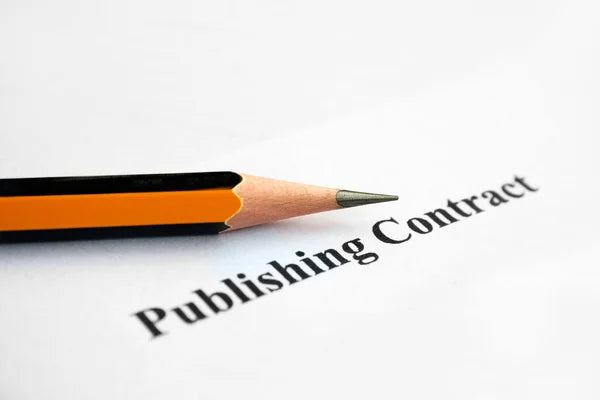A publishing contract is one of the most important documents in your journey as an author. It sets out the rights, responsibilities, and expectations between you and your publisher. Just as you carefully crafted your manuscript, it’s equally important to read your contract thoroughly. Understanding its terms helps protect your work, avoid misunderstandings, and build a healthy, transparent working relationship with your publisher.

Publishing contracts can look very different depending on the publisher. Some provide a short, one-page summary with just the essentials. Others — especially larger publishers or those working with lawyers — may issue a detailed document of 20 pages or more. Legal wording and technical terms can feel confusing. At first, they may even seem intimidating. While there’s no single “right” way to write a contract, some practices are more ethical and author-friendly than others. Larger publishers often include more clauses simply to cover wider operational or legal responsibilities.
Even if you fully trust your publisher, or are short on time, it’s still important to review the key clauses carefully. Take time to understand the main points, and schedule a conversation with your publisher to clarify anything unclear. Doing so prevents misunderstandings, aligns expectations, and creates a more positive, professional collaboration. By reviewing your contract thoughtfully, you protect your creative and financial interests and set your book up for success.
At TrendLit Publishing, we are committed to fairness and transparency in contract management. We are always open to discussions and flexible in accommodating different project needs, ensuring that both authors and publishers work together in a mutually respectful and supportive way.
7 Key Clauses to Check in Your Publishing Contract
1. Rights Granted & Retained
· Formats: print, e-book, audiobook, adaptations
· Territories & Languages: which regions and languages are included
· License Type: exclusive or non-exclusive
2. Term & Reversion
· Duration: how long the contract is valid
· Reversion: under what conditions do rights revert back to you (e.g., out-of-print, breach, or non-performance?)

3. Royalties & Advances
· Calculation: cover price vs. net receipts
· Payment: schedule and recoupment terms
· Audit: your right to review sales and reports
4. Editorial & Design Control
· Scope: how much authority the publisher has over edits and design
· Approval: whether you are consulted or have approval rights for major changes
5. Marketing & Distribution
· Publisher Support: online, retail, events
· Commitments: minimum print runs or promotional obligations

6. Warranties, Indemnities & Liabilities
· Originality: confirm your work does not infringe on others’ rights
· Liability: limits for both parties
7. Termination & Dispute Resolution
· Ending the Contract: how either party can terminate
· Disputes: process for resolving disagreements (mediation, arbitration, etc.)
Tip: Even if you trust your publisher, take time to review these key clauses and clarify anything unclear. Understanding your rights and responsibilities from the start helps prevent issues down the line and sets the stage for a smoother, more successful publishing journey.

📩 Interested in publishing or commissioning your next title?
Connect with us to explore the best publishing model for your project.
contact@trendlitpublishing.com | (+65) 6980-5638 | (+65) 8896-1946

